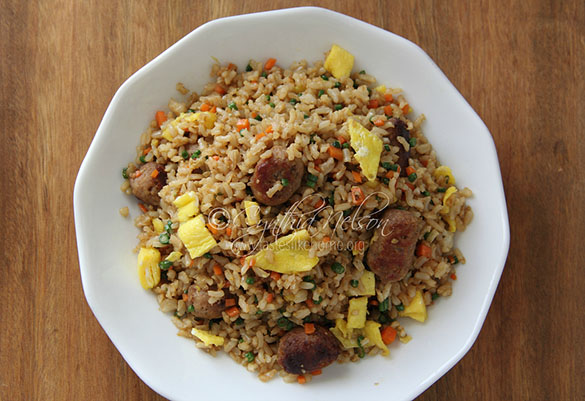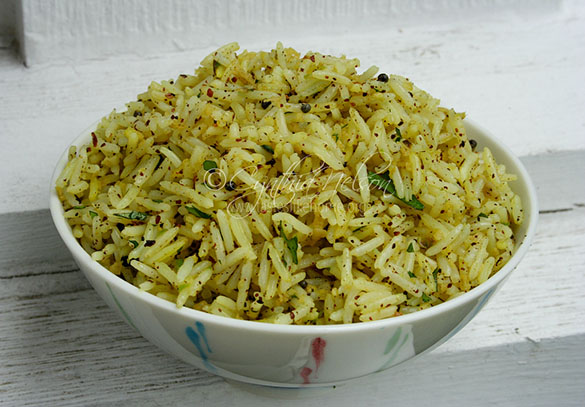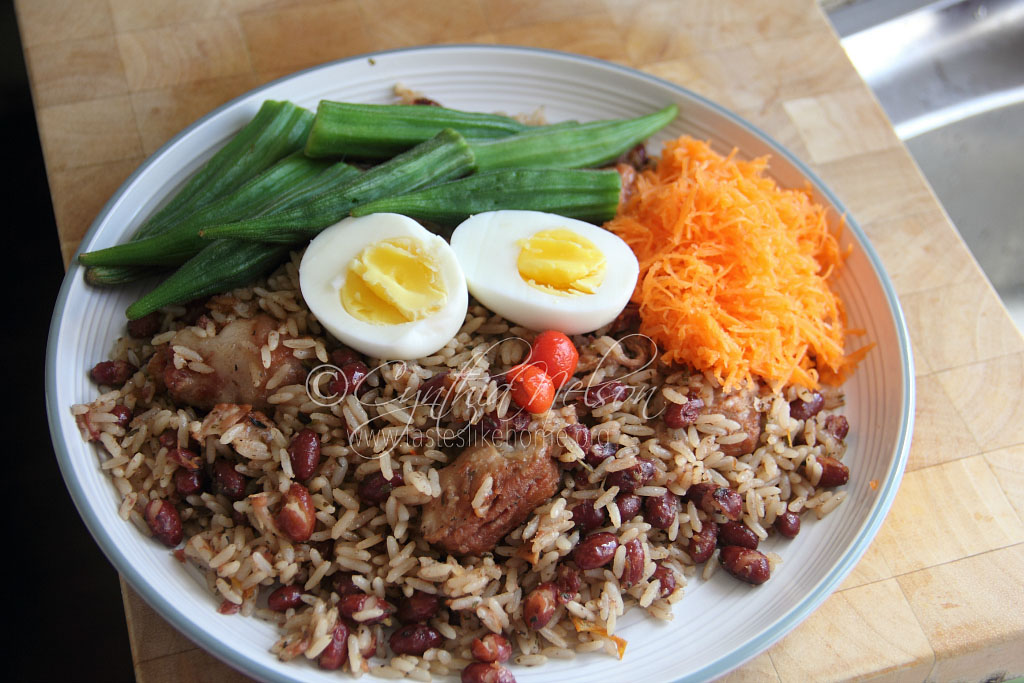
Why soak rice? Is it necessary? What is the effect of soaking rice before cooking?
The soaking of washed raw rice before cooking is a cultural thing; some people do, and some don’t. It is necessary? Not at all. However, the texture of the cooked rice is much improved; it is light, tender, and has that fluffiness that is often associated with cooked rice.

When rice is soaked it absorbs water, obviously swelling and increasing in volume. This results in the need for less water when cooking and also cuts down on the cooking time. Not all rice is suitable for soaking, the ones that are, tend to be heartier and of a firmer grain. Brown rice, parboiled rice and Basmati rice all lend themselves to soaking. These heartier grains take a longer time to cook and soaking them before cooking can almost halve the time they take to cook. And when cooked, the texture is very pleasing. On the other hand, some white grains such as Jasmine, and regular short grain white rice need not be soaked for they are likely to lose some of their structure when cooked after being soaked.

Soaking time
Rice can be soaked for as much as 2 hours before cooking, particularly brown rice and parboiled rice because they are less processed. I have soaked Basmati rice for that period of time too. However, I generally soak Basmati (which I use as my house rice) for at least half an hour prior to cooking; parboiled, for an hour and brown rice, 2 hours.
To soak rice, rinse well and drain until the water is almost clear and cover with water that comes about 3 inches above the rice. When ready to cook, drain well and add to the pot.
Water measurement and cooking
Soaked rice is cooked using the absorption method – this is where a measured amount of water is added to the rice, brought to a boil and cooked on low heat, tightly covered, for a prescribed time. For example, for every cup of Basmati rice, add 1 and one-third cups of water, bring to a boil, reduce heat to low and cook covered for 25 minutes. Shut off the heat and let sit covered for another 10 minutes before removing the lid and fluffing with a fork.
Always be guided by a recipe as to the amount of water needed to cook the rice (using the absorption method). Do not determine/measure the amount of water based on the soaked rice which has swollen and increased in volume. This would result in you using more water than is necessary and can result in a soggy, pasty mass. Base it on the measurement of the rice in its raw state, before washing and soaking.
In most cases, recipes will tell you one of two things – reduce heat to low as soon as the pot comes to a boil, or, reduce heat to low after the pot has been boiling and you begin to see the surface of the rice. This determination will be made depending on what you are making. Dishes best suited for soaked rice using the absorption method are Rice and Peas, Cook-up Rice, Pelau, Pilafs and if you want to cook the rice plain instead of boiling and draining.
Many years ago, whilst on a visit overseas I was invited to the home of friends of a friend of Persian (Iranian) descent. They prepared a feast and the thing I always remember is the quality and taste of the rice. They had made two rice dishes – Javaher Polow (Persian Jeweled Rice) and Tah-Dig (plain cooked rice scented with saffron and the bottom scorched and crunchy). Every grain of rice was discernable, every spoon and forkful, light, soft, tender; the mouthfeel, indescribable. I just kept eating the rice, paying little attention to anything else on my plate. Over tea and dessert, I asked my host about the rice, and apart from explaining the two-step process of cooking the rice – boiling and then by absorption, she explained that the rice was soaked before cooking. Since then I only cook rice (with the exception of white rice for fried rice), after it is soaked. Whenever anyone comes by me and eats rice, they always ask what I have done with the rice and the answer is very simple, I soaked it before cooking it. You should give it a try.
Cynthia
cynthia@tasteslikehome.org





